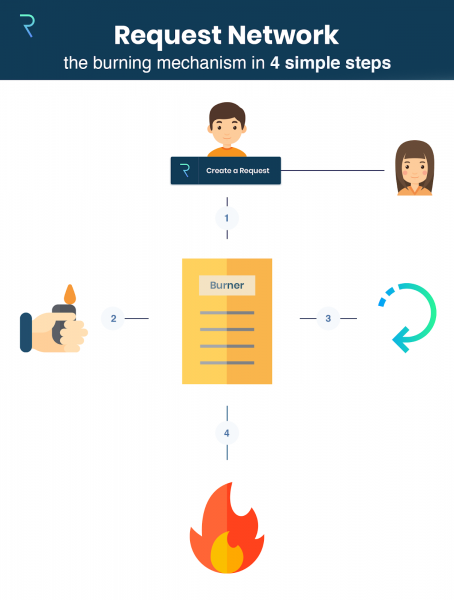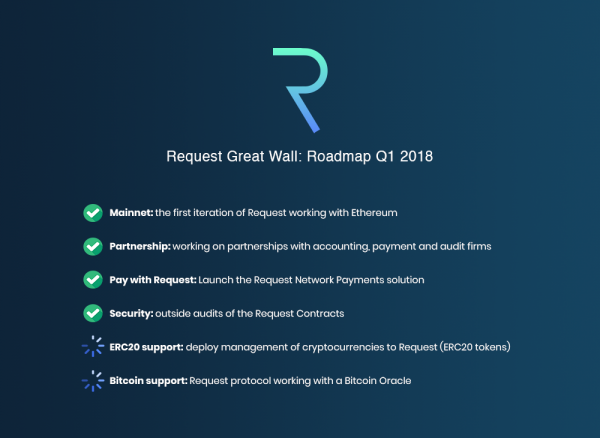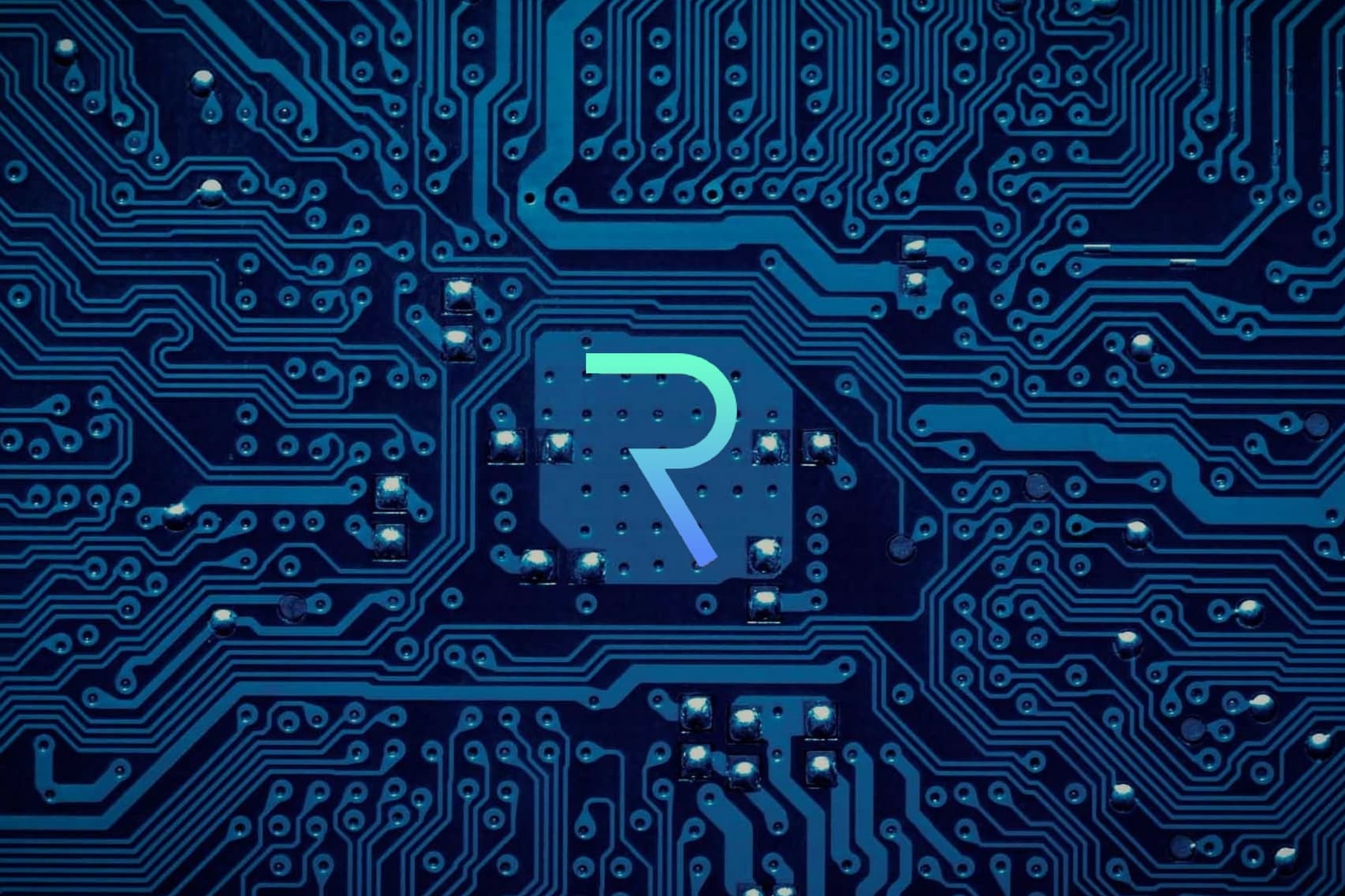Request Network, the protocol which provides individuals and corporations with the tools they need to develop blockchain-based financial solutions for processes ranging from invoicing to loans, has just announced that their network is now live. This is a landmark moment for the project, a culmination of the months of testing and groundwork that preceded it.
Users can now use the network to send payment requests. The network has been deployed on top of the Ethereum main network and offers a handful of features in its first version, including:
- Connecting your wallet with Metamask or the Ledger hardware wallet
- Creating, sending, and paying requests in ETH
- Paying the same request multiple times
- Updating a broadcasted request
- Checking all outstanding and incoming requests associated with an ETH address
It is important to note that this version of the network is a primitive one – workable, but subject to several future updates. It performs a key function in that it allows users to interact with smart contracts on the Ethereum network. The plan is to tack additional features and improvements onto this protocol over the coming months. As it is, there is a fully functional network for users to play with.
For the developers, an important stakeholder in the network, this launch means they can develop, build, and launch software without requiring permission from third parties. With this barrier removed, Request Network could be on the path to quick growth.
Fresh from securing a partnership with PwC France, the project hits another high note as it seeks to transform the payments industry. In recent months, Request Network has been making good on its promise to become “the future of commerce.”
Other Developments
Accompanying the release of the live network are several other noteworthy developments, detailed by the team in the same blog post.
Request Network Payments
The most significant of these is the public introduction of Request Network Payments, a facility that lets e-merchants and websites utilize the Request Network to accept cryptocurrency payments. This lets websites integrate cryptocurrency payments directly into their payment system, just like they would any other method of payment. This service is free of merchant fees, unlike traditional payment methods. Like the live network launch, updates and improvements will be made as time goes by.
The Burning Mechanism
The team has also introduced a new mechanism to catalyze the ecosystem’s growth called the Burning Mechanism, where the user pays a small fee for using the network when he or she creates a Request on the network. This fee, which can be anywhere between 0.1% to 0.005% of the payment amount requested, is stored in a burner smart contract and is used only when someone interacts with the contract by calling the burn function. The maximum fee for a Request is $1.50.

When the burn function has been called, the smart contract exchanges the stored ETH for REQ through an order on a decentralized exchange (DEX). The DEX used here is the Kyber Network. Following this, the REQ is stored on the smart contract and the total amount of REQ tokens coming back from the DEX is simultaneously burned.
ERC-20 Management
To facilitate a wider range of transactions, the team has developed an ERC-20 token integration feature that is now functional on the testnet. This allows requests and payments to be made on any ERC-20 token. It is currently undergoing an audit and will be released onto the mainnet afterwards.
This feature is in keeping with Request Network’s principle of inclusivity. The Foundation wishes to be compatible with all blockchains, letting users connect to the Request Network but operate with other tokens. The ability to support other tokens is in the team’s sights, and they will gradually work their way towards this goal.
Other
The team also welcomed a new team member, Benjamin Shafii, who will work as a Full Stack Developer at the Request Network Foundation. He will be responsible for developing applications that cater to a wider variety of use cases which can interact with the network’s smart contracts.
Lastly, Request Network has been listed on the Korean exchange Huobi. This makes the token accessible in a highly enthusiastic market, a country in which 3 of the top 5 Ethereum exchanges exist. Korea’s large population of young workers, solid technological infrastructure and mostly crypto-friendly environment make it an ideal proving ground for cryptocurrencies. In the short time that Request Network has been listed on Huobi, over $2 million in volume has been traded, indicating a certain amount of interest in the project.
Q1 Report Card
The team also notes in the post that so far they have missed 2 of their 6 Q1 goals, namely the aforementioned ERC-20 integration and support for Bitcoin. The first will soon be available, but as for the second, its release date is still unknown. The team had hoped to release the Bitcoin Oracle along with the live release. This support for Bitcoin is definitely being worked on, but we have no concrete dates for its arrival.

All things considered, and especially the fact that they have launched a live network, the project is progressing at a decent rate, although we could do with a few updates on specific objectives.
In the coming months, the team will focus their energies on:
- Supporting Bitcoin and more ERC-20 tokens
- Creating advance payment conditions
- Encrypting data to ensure privacy
- Considering various scaling solutions such as Lightning and Plasma
Furthermore, to build some momentum, the team will develop three dapps on their network: a payments app, a crowdfunding app, and an accounting app. They see it as a good marketing opportunity with real use cases for the public. The work is already in progress, and these applications are being developed simultaneously. The payments app, as we mentioned, has already been launched but will see further improvements in 2018.
At the time of writing, the Request Network token, REQ, is valued at $0.15 or 0.00002158 Satoshi. Its market cap stands at $100 million. If you’re unfamiliar with the project, read our guide to the Request Network project.

